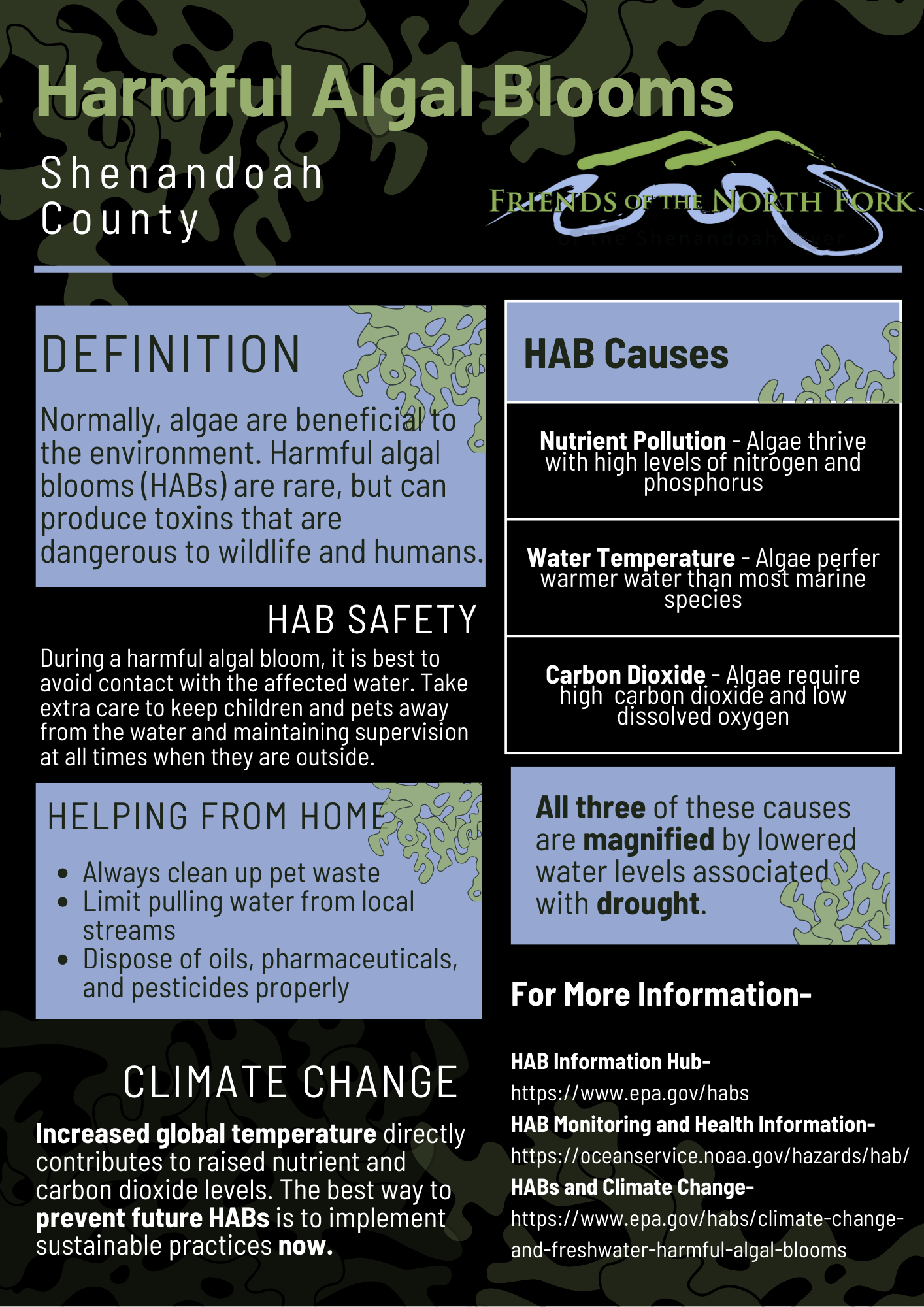

River health can vary depending on the season, stream flow, and many other factors. It changes with chemical imbalances, shifts in groundwater level, and rainfall. It can have good and bad days, years, or even decades. Although river appearance may indicate certain variables of stream health (turbidity, water level, algae, etc.), many of the most important aspects are invisible to the naked eye. Frequent water testing is required to keep the river healthy.
What we do know:
- Excessive nutrients from polluted runoff–both urban and agricultural–are a major factor in algae growth that impacts water quality.
- Sediment from eroding stream banks and other sources can clog streambeds and ruin the habitat for fish and other organisms. Additionally, sediment blocks the sunlight that plants require, thus decreasing dissolved oxygen.
- Fecal coliform bacteria from improper storage of livestock waste and failed septic systems can be washed into the river. This bacteria can be harmful to humans, wildlife, and pets.
- Man-made chemicals, known as trace organics, are washed into the water system and pollute drinking water.
Our monitoring methods:
- Friends of the North Fork has a Science Committee that directs ongoing monitoring and research efforts. This includes chemical testing as well as monitoring benthic macroinvertebrates, which serve as biological indicators of stream health.
- Dozens of dedicated volunteer scientists have been working with our sister organization, Friends of the Shenandoah River, to collect water quality samples twice a month for over 20 years.
- The South River Science Team has been looking at the mercury problems on the South Fork for decades.
- The Smith Creek Watershed Partnership involves both restoration and research elements.
- Our organization has worked with various partners including the United States Geological Service to study trace organic compounds in the river and their potential role in fish kills.
